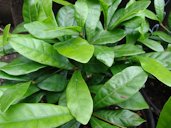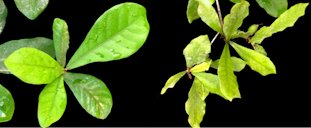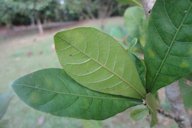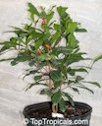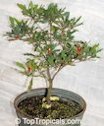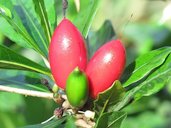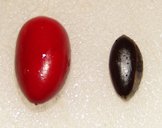| Miracle Fruit - Synsepalum dulcificum | |||||||||||||||||||||||||
|---|---|---|---|---|---|---|---|---|---|---|---|---|---|---|---|---|---|---|---|---|---|---|---|---|---|
 Fig. 1  Synsepalum dulcificum 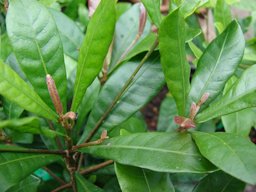 Fig. 2  S. dulcificum (leaves), Maui, Kula Ace Hardware and Nursery, Hawai'i 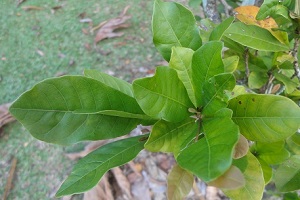 Fig. 3  Leaf growth habit 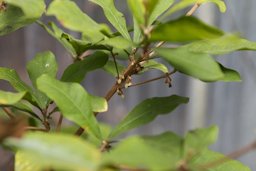 Fig. 9  Flowering branch ![Credit: 阿橋 HQ 神秘果 Synsepalum dulcificum [香港公園 Hong Kong Park]](images/MiracleFruitNatureLovesYou4300.jpg) Fig. 10  神秘果 S. dulcificum flowers 香港公園 Hong Kong Park 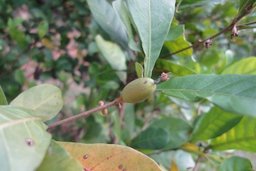 Fig. 13  Unripe fruit  Fig. 14  Miracle fruit plants bear fruit throughout the year in warm, humid climates; a single plant can hold hundreds of berries at a time 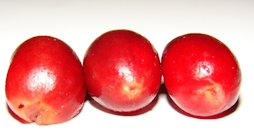 Fig. 15  S. dulcificum (miraculous berry, miracle fruit) ripe fruit  Fig. 16  S. dulcificum (miraculous berry, miracle fruit) 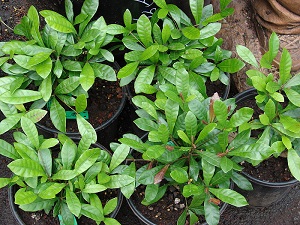 Fig. 20  S. dulcificum (habit), Maui, Kula Ace Hardware and Nursery, Hawai'i 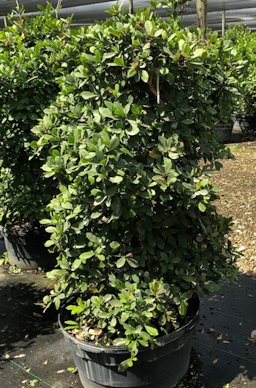 Fig. 21  Miracle fruit bush growing in container under shade cloth, shown is ‘Flame’ type 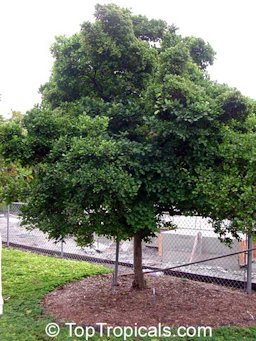 Fig. 23  25 year old tree at Bill Withman's garden 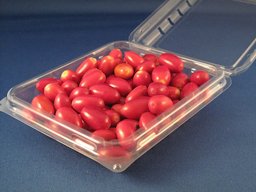 Fig. 24  Fresh Miracle Fruit berries have a relatively short shelf life 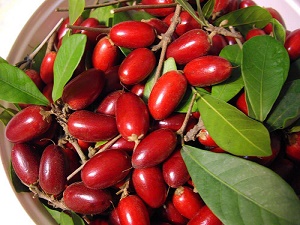 Fig. 25  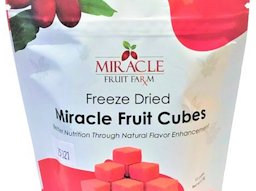 Fig. 26  Freeze-dried miracle fruit in cubes form, Miracle Fruit Farm, Miami, FL 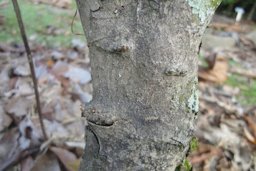 Fig. 27  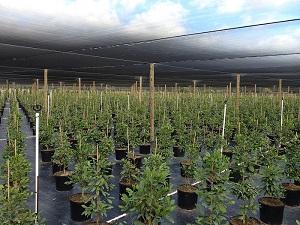 Fig. 28  Miracle Fruit plants can grow up to 10' tall, Miracle Fruit Farm, Miami, FL |
Scientific
name Synsepalum dulcificum (Schumach. & Thonn.) Daniell Common names English: miracle fruit, miracle berry, miraculous berry, sweet berry; French: fruit miraculeux; German: Wunderbeere; West Africa: taami, asaa, ledidi 19 Synonyms Bakeriella dulcifica Dubard; Bumelia dulcifica Schumach. & Thonn.; Pouteria dulcifica (Schumach. & Thonn.) Baehni; Richardella dulcifica (Schumach. & Thonn.) Baehni; Synsepalum glycydorum Wernham 12 Relatives Sapodilla (Manilkara zapota) Family Sapotaceae (sapodilla family) Origin Tropical West Africa Uses The miracle fruit is unusually well suited for container growth (once you are aware of its need for acidity) 11 Height To 18 ft (5.5 m) in its native habitat, but rarely to 5 ft (1.5 m) otherwise 1 Plant habit Evergreen, bush or tree Growth rate Slow Pruning requirement Plants should be pruned annually to facilitate harvesting 20 Leaves Evergreen; alternate; glossy green; clustered at the branch tip; short petioles 19 Flowers Hermaphroditic; solitary or in pairs; on the axiles or below the foliar zone 18 Fruit Fruit are ellipsoids; thin skin; sweet and carnose pulp; one seed 18 Season Throughout the year, largest crop in winter Light requirement Full sun but thrives best under partial shade 19 Soil tolerances Will not tolerate alkaline soil nor water-logging pH preference 4.5 to 5.8 Drought tolerance Unknown Aerosol salt tolerance Unknown Soil salt tolerance Unknown Cold tolerance Hardy to 32°F (0 °C) Plant spacing ~8 feet (2.5 m) 21 Invasive potential * None reported Pestdisease resistance Few pests and diseases Reading Material Growing Miracle Fruit for Specialty Crop Production in Florida, University of Florida pdf Could the Miracle Fruit be for South Florida? University of Florida Fact Sheet on the Miracle Fruit, California Rare Fruit Growers The Old Sweet Lime Trick, Quisqualis Miracle Fruit, Archives of the Rare Fruit Council of Australia Scientists at the University of Florida’s Tropical Research and Education Center have unlocked the mystery behind a highly sought-after berry known as the miracle fruit. 24 Study Shows How Bountiful ‘Miracle Fruit’ Can Grow in the Subtropics ext. link Origin/Distribution It is a native of tropical west and west central Africa. It is occasionally cultivated from Ghana to Nigeria, with experimental plantations in tropical America. It has been introduced into many southeast Asian countries, Australia and the USA. 19 Description Miracle fruit (Synsepalum dulcificum) is the botanical source of miraculin and an understudied tropical fruit species with potential as a natural, noncaloric sweetener. Miracle fruit originates in West Africa and requires tropical/subtropical growing conditions to thrive. The fruit pulp contains the miraculin protein. Miraculin changes the perception of sour (acidic) foods and beverages to sweet by temporarily modifying taste receptors on the tongue. Miracle fruit could play a role in reducing sugar content in some food and beverage applications and could be a viable crop for subtropical southern Florida. 20 The major strength of the miraculin as a noncaloric sweetener is that its flavor profile is the closest to sugar when compared to other natural sweeteners, and it is free from metallic off flavors. 20 Today, miracle fruit can be sold as a natural product, but miraculin requires additional safety assessment before it can be sold as a food or a food additive. 20
Note: "There is a tropical fruit that can be grown in Florida called miracle fruit or miracle berry, that has a very interesting benefit for cancer patients undergoing chemo treatment. This tropical berry from West Africa can make sour things temporarily taste sweet, but more importantly, it can give cancer patients, who say everything tastes metallic, an appetite again. This week’s featured video was produced by the Miracle Fruit Farm outside of Miami, Florida to promote their unique product line produced from their nursery." 23 The video includes an interview with Dr. Mike Cusnir MD, who is a specialist in hematology and oncology at Mt. Sinai Hospital, as well as testimonials from actual cancer sufferers who used miracle fruit while undergoing chemo to help restore the natural flavor of food, boost nutrition, and just simply help them enjoy a meal. Leaves The leaves can vary in morphology from flat to wavy or curved (Fig.5). They can measure approximately 2-4 in. (5-10 cm) long by 0.5-1.5 in. (1.2-3.8 cm) wide, though there is diversity in leaf morphology. Leaf morphology can also change in response to plant health. 20
Fig. 4. S. dulcificum (leaves), Maui, Kula Ace Hardware and Nursery, Hawai'i Fig. 5. Leaves of ‘Imperial’ (left) and ‘Holly’ (right) Fig. 6. Underside of leaf Fig. 7. S. subcordatum - large leaf variety, 1 ft tall plant fruiting in 3 gal pot Fig. 8. S. dulcificum - small leaf-variety, 1 ft tall plant fruiting in 3 gal pot Flowers The small white axillary flowers are bisexual, solitary or in clusters of 2-4. The calyx is 5-lobed, 0.2 in. (5 mm) long, ribbed with triangular lobes, and the white corolla is of similar length. Flowering can begin at the age of 3 years. Depending on conditions (nutrition, climate), they can flower almost continuously all year round. From flower to fruit is a mere 3 to 4 weeks. The flowers produce a sweet perfume at night. 22 They start out a cream colour and turn a dark red to black when past mature. 11
Fig. 11,12. S. dulcificum, cultivated, Biological Sciences Greenhouse, Florida International University, Miami, Florida, USA Synsepalum dulcificum Up Close & Personal, Quisqualis Miracle Fruit Flowers and Fruit, Quisqualis Pollination How is this fruit pollinated? Some references exist that say it is ‘self pollinated’ and I found none showing insect or animal pollination. The shape of the flower, and the fact that many of them face downwards, suggests gravity as a mechanism. 18 If pollination is not carried out by local insects, a small brush can be used to transfer pollen. 22 Fruit The fruit is a small bright red, ellipsoid berry approximately 2 to 3 cm long and containing a single seed. Although not sweet itself, when a single fruit is eaten and the fleshy pulp allowed to coat the taste buds of the tongue and inside of the mouth, an extraordinary effect occurs. The fruit will now allow one to eat a slice of lemon or lime without wincing. The marvelous aroma and inherent sweetness of the citrus remains but the sourness is almost completely covered. 1 "In the writer's opinion, one fruit worked in the mouth long enough to remove all the pulp from the smooth, shiny single seed, gives maximum results, and consuming additional berries does not tend to increase its potency. The sweet-inducing properties of this "taste-twister" can linger on for up to three hours and the flavor of fruits, such as fresh strawberries, can be greatly enhanced when certain delicate flavors, formerly masked by table sugar, are released and experienced for the first time." 6 The miracle fruit berry has a short shelf life, and the miraculin protein itself is not heat stable in its native form. Miracle fruit and miraculin must therefore be processed by freeze-drying or freezing of fresh berries to preserve the taste-modifying properties. Fruit should be harvested weekly to reduce losses due to overripe fruit. 20
Fig. 18. Fruit and white flower at bottom of image Fig. 19. S. dulcificum (seeds), Maui, Makawao Varieties Both regular and large-leaf and a hairy-leaf form are known. 1 There are 2 known species of synsepalum that carry miracle fruits. Synsepalum dulcificum is a smaller-leaf version (leaves are narrow), and is somewhat slower growing plant. Synsepalum subcordatum (Giant Miracle Fruit) is a larger leaf variety, and grows into a small tree. The fruit are slightly bigger than those of S. dulcificum, and are produced more profusely, especially in first years. With age, the fruit crop amounts of these two species become about the same. 13 ‘Imperial’, ‘Cherry’, ‘Scarlet’, and ‘Vermilion’ all had significantly higher average fruit weight than ‘Flame’, ‘Holly’, ‘Sangria’, ‘Wine’, and ‘Cardinal’. 20 Morphotypes ‘Cardinal’ and ‘Imperial’ were among the types with the highest average number of fruit per tree per season (~1,800 to 1,900) and could be the most profitable for growers selling individual fruit. 20 Harvesting Healthy plants can start producing fruit in their third year and reach highest yields towards their fifth year. 20 The miracle fruit, upon attaining a height of two to three feet in four years or less, can produce fifty or more berries at one time. The main crop comes in winter, with larger plants tending to bear some fruit most of the year. 6 Propagation Seeds should not be dried out before planting. When propagating miracle fruit, sow the seeds in a rich, well-drained medium, just barely covered, and water lightly every other day. Seeds generally come up in about eight to ten weeks, but grow slowly the first year, often being only two to three inches tall at the end of almost one year of growth. It really takes three to four years before the plants reach a height of more than fifteen to twenty inches, and then they start to grow more rapidly. 14 Although it can be rooted from cuttings under mist, cuttings generally take a long time to root and don't seem to grow as fast as seedlings. So, in commercial production, almost all miracle fruit are still propagated from seed. On large plants, it might be feasible to attempt air-layerings, or even grafting from bearing ones to seedlings, but I don't know of anyone who has tried it. 14
Fig. 22. Small plants can produce berries if grown from a cutting rather than a seed Planting An acid soil is a must for miracle fruit. They prefer a soil acidity of pH 4.5 to 5.8. This can be achieved by planting in equal parts Canadian acid peat and pine bark. Also peat and perlite mixes are said to give excellent result. 1 Commercial: Miracle fruit plants are grown in large pots (~20 gallon) with soilless mix at 2.5 m spacing (~8 feet). Container production in southern Florida is favored in order to avoid intolerance for alkaline soils as are common in southern Florida where the plants are commercially grown. 20 Growing instructions for this plant, Top Tropicals nursery pdf Fertilizing Plant fertigation has not been optimized, but regular application of a balanced 18-6-8 slow-release fertilizer will facilitate plant growth and fruiting. Further studies on plant nutrition are necessary to develop fertilizer rates. 20 Irrigation Be sure that the soil is well draining as the plants do not like to sit in wet soils. Coming from a tropical climate they need highly humid conditions. 1 Supplemental irrigation is required during the dry season. 20 Pests Pests can include mealy bugs and mites. These can be controlled by horticultural oils or soaps according to product labels. There are no major diseases of miracle fruit in southern Florida at this time. 20 Food Uses Fruit pulp is eaten with other foods to counter sour or bitter flavours. It is also used to flavour palm wine and for the development of artificial sweetness. The fruit has potential for use in dessert, sauce and salad. Its fruit has great prospects for use to make chewing gum. The miracle berry contains glycoprotein, a huge molecule consisting of protein with attached sugar groups with a molecular weight of 44, 000. In the presence of an acid, the attached sugar groups stimulate the sweet taste receptors. Until the enzymes present in saliva hydrolyze the glycoprotein, which takes about 90 to 120 minutes, an acid food will taste sweet but no sugar is absorbed and there is no after taste. 21 It is unfortunate that heat destroys the active principle, so that canning, jams, preserves, baking, drying, etc. are impossible. The fruits can be held for a short period of time by refrigeration or freezing. 12 Medicinal Properties ** As a no-calorie substitute for sugars and one that doesn’t trigger insulin release, it has been proposed as an alternative flavour enhancer in processed foods, and also for persons undertaking chemotherapy treatment, where typically these drugs distort or degrade perceived food flavours, often with negative nutritional consequences. One berry is sufficient to give the effect - more does not increase the effect. 22 General Miraculin differs from most other "sweet-tasting" proteins in that it is a taste modifier, without itself having a sweet taste. In general, "sweet-tasting" proteins may be classified into three categories: the protein itself is sweet (thaumatin, monellin, mabinlins, pentadin and brazzein), the protein induces sweetness (miraculin), or both (neoculin, the heterodimeric form of curculin) (Hiwasa-Tanase et al. 2012). 14 Synsepalum subcordatum (Giant Miracle Fruit) is called Munga in India. 16 Further Reading New Benefits from Miracle Fruit, Tropical Fruit News, RFCI Miracle Fruit and Chemotherapy, Tropical Fruit News, RFCI The Miracle Fruit, Tropical Fruit News, RFCI Research on Miraculin List of Growers and Vendors |
||||||||||||||||||||||||
| Bibliography 1 "Miracle Fruit." California Rare Fruit Growers, 1996, crfg.org. Accessed 28 Jan. 2014. 2 "Synsepalum dulcificum." Wikipedia, wikipedia.org. Accessed 13 Feb. 2015. 3 Gollner, Adam Leith. The Fruit Hunters: A Story of Nature, Adventure, Commerce, and Obsession. New York, Scribner, 2008. 4 Theerasilp S., and Y. Kurihara. "Complete purification and characterization of the taste-modifying protein, miraculin, from miracle fruit." Wikipedia, Aug. 1988, J. Biol. Chem. 263 (23): 11536–9. PMID 3403544, wikipedia.org. Accessed 22 Feb. 2015. 5 Rowe, Aaron. "Super Lettuce Turns Sour Sweet." Wired Magazine, 12 July 2006, (Archived). Accessed 22 Feb. 2015. 6 Whitman, William F. "Miracle Fruit." Archives of the Rare Fruit Council of Australia, Museum of Science, 3280 South Miami Avenue, Miami, Florida 33129, Mar. 1994, rfcarchives.org.au. Accessed 22 Feb. 2015. 7 Levin, Rachel B. "Ancient Berry, Modern Miracle: The Sweet Benefits of Miracle Fruit." The Food Blogger, 23 June 2009, Wikipedia, wikipedia.org. Accessed 22 Feb. 2015. 8 Mangold, Tom. "Sweet and sour tale of the miracle berry." The Week, 28 Apr. 2008, Wikipedia, wikipedia.org. Accessed 22 Feb. 2015. 9 "The miracle berry." British Broadcasting Corporation, 28 Apr. 2008, Wikipedia, wikipedia.org. Accessed 22 Feb. 2015. 10 Gerritsen, Vivienne Baillie. "The sweet side of life." Expasy, Dec. 2001, Wikipedia, wikipedia.org. Accessed 22 Feb. 2015. 11 McVicar Cannon, Donna. "The Old Sweet Lime Trick." Quisqualis Rare Fruit, Tropical Fruit and Rare Plant Information, 1992, 2006, quisqualis.com. Accessed 1 Mar. 2015. 12 "Synsepalum dulcificum (Schumach. & Thonn.) Daniell." The World Flora Online, WFO, www.worldfloraonline.org/taxon/wfo-0000318142. Accessed 27 Nov. 2022. 13 Synsepalum dulcificum: "Everyday Miracle - Grow the Dream!" Top Tropicals, toptropicals.com. Accessed 5 Jan. 2017. 14 Joyner, Gene. "The Miracle Fruit." UF/IFAS Palm Beach Extension, ifas.ufl.edu. Accessed 14 Apr. 2015. 15 Shapiro, Leo. "Miracle Berry." The Encyclopedia of Life, (CC BY 3.0), eol.org. Accessed 14 Apr. 2015. 16 Parmar, Chiranjit. "Synsepalum subcordatum." Fruitworld Online Magazine, fruitipedia.com. Accessed 14 Apr. 2015. 17 Cannon II, Bob. G. "Synsepalum dulcificum Up Close and Personnal." Quisqualis Rare Fruit, Tropical Fruit and Rare Plant Information. 1992, 2006, quisqualis.com. Accessed 1 Mar. 2015. 18 Lorenzi, Harri, et al. Brazillian Fruits & Cultivated Exotics (for consuming in natura). Instituto Plantarum de Estudos da Flora, Nova Odessa, Brazil, 2006. 19 Lim, T. K. "Edible medicinal and non-medicinal plants, Fruits, vol. 6." ZLibrary, 2013, b-ok.cc/book/2144921/a9ea16. Accessed 23 Nov. 2022. 20 Demesyeux, Lynhe, et al. "Growing Miracle Fruit for Specialty Crop Production in Florida." Horticultural Sciences Dept., UF/IFAS Extension, Original pub. Sept. 2022, AskIFAS, doi.org/10.32473/edis-HS1449-2022, edis.ifas.ufl.edu/pdf/HS/HS1449/HS1449-Dkx27syonb.pdf. Accessed 26 Nov. 2022. 21 Pareek, Om Prakash, and Suneel Sharma. "Underutilized Fruits and Nuts Vol.2: Fruits of tropical region." EPDF, epdf.pub/underutilized-fruits-and-nuts-vol2-fruits-of-tropical-region.html. Accessed 26 Nov. 2022. 22 "Miracle Fruit, Miracle Berry, Synsepalum (Richardella) dulcificum (dulcifica)." The Rare Fruit Club WA, www.rarefruitclub.org.au/MiracleFruit.htm. Accessed 26 Nov. 2022. 23 Mayo, Doug. "Friday Feature: Miracle Fruit for Chemo Patients." UF/IFAS Extension, 7 May 2021, AskIFAS, nwdistrict.ifas.ufl.edu/phag/2021/05/07/friday-feature-miracle-fruit-for-chemo-patients/. Accessed 29 Nov. 2022. 24 Mederos, Lourdes. "Could the Miracle Fruit be for South Florida?" UF/IFAS News Blog, 28 Oct. 2020, AskIFAS, blogs.ifas.ufl.edu/news/2020/10/28/could-the-miracle-fruit-be-for-south-florida-new-study-uncovers-data-showing-how-bountiful-it-can-grow-in-the-subtropics/. Accessed 27 Nov. 2022. Video v1 "Miracle Fruit for Chemo Patients." Miracle Fruit Farm, 7 May 202, www.miraclefruitfarm.com. Accessed 26 Nov. 2022. Photographs Fig. 1 Lyman, Hamale. "Photo of Miracle berry." Wikimedia Commons, 2010, commons.wikimedia.org. Accessed 13 Feb. 2015. Fig. 2,4 Starr, Forest, and Kim. "Synsepalum dulcificum (Miraculous berry, miracle fruit) leaves. Kula Ace Hardware and Nursery, Maui." Starr Environmental, 2007, (CC BY 4.0), starrenvironmental.com. Accessed 13 Feb. 2015. Fig. 3,6,13,27 Kwan. "Synsepalum dulcificum (miracle fruit)." The Plant Observatory, 2012, natureloveyou.sg. Accessed 13 Feb. 2015. Fig. 5 Brym, Maria. "Leaves of ‘Imperial’ (left) and ‘Holly’ (right)." Horticultural Sciences Dept., UF/IFAS Extension, Original pub. Sept. 2022, AskIFAS, doi.org/10.32473/edis-HS1449-2022, edis.ifas.ufl.edu/pdf/HS/HS1449/HS1449-Dkx27syonb.pdf. Accessed 26 Nov. 2022. Fig. 7 "Synsepalum subcordatum - large leaf variety, 1 ft tall plant fruiting in 3 gal pot." Top Tropicals, toptropicals.com. Accessed 5 Jan. 2017. Fig. 8 "Synsepalum dulcificum - small leaf-variety, 1 ft tall plant fruiting in 3 gal pot." Top Tropicals, toptropicals.com. Accessed 5 Jan. 2017. Fig. 9 Manners, Malcolm. "Flowering branch." Useful Tropical Plants Database, (CC BY 2.0), tropical.theferns.info. Accessed 5 Jan. 2017. Fig. 10 阿橋 HQ. "神秘果 Synsepalum dulcificum [香港公園 Hong Kong Park]." Wikipedia Commons, via Flickr, 11 Oct. 2008, (CC BY-SA 2.0), commons.wikimedia.org/wiki/File: 神秘果_Synsepalum_dulcificum_-香港公園_Hong_Kong_Park-_(9240151238).jpg. Accessed 26 Nov. 2022. Fig. 11 Zona, Scott. "Synsepalum dulcificum, cultivated, Biological Sciences Greenhouse, Florida International University, Miami, Florida, USA." Flickr, 13 July 2012, (CC BY-NC 2.0), flickr.com/photos/12017190@N06/34966849213. Accessed 27 Nov. 2022. Fig. 12 Zona, Scott. "Synsepalum dulcificum, cultivated, Biological Sciences Greenhouse, Florida International University, Miami, Florida, USA." Flickr, 13 July 2012, (CC BY-NC 2.0), flickr.com/photos/12017190@N06/35389022310. Accessed 27 Nov. 2022. Fig. 14 MiracleFruitFarm. "Miracle Fruit plants bear fruit throughout the year in warm, humid climates. A single plant can hold hundreds of berries at a time." Miracle Fruit Farm, 8 Mar. 2012, Wikimedia Commons, (CC BY-SA 3.0), commons.wikimedia.org/wiki/File:Berries_-_MiracleFruitFarm.JPG. Accessed 26 Nov. 2022. Fig. 15,16 Starr, Forest, and Kim. "Synsepalum dulcificum (Miraculous berry, miracle fruit). Makawao, Maui." Starr Environmental, 2008, (CC BY 4.0), www.starrenvironmental.com. Accessed 13 Feb. 2015. Fig. 17 Zona, Scott. "Cây Thần Kỳ Synsepalum dulcificum thuộc họ Hồng Xiêm (Sapotaceae)." Flickr, 22Dec. 2012, (CC BY-ND 2.0), flickr.com/photos/binh-minh/8297583270. Accessed 27 Nov. 2022. Fig. 18 MiracleFruitFarm. "Miracle Fruit berries sprout from white flowers." Miracle Fruit Farm, 2012, Wikimedia Commons, commons.wikimedia.org. Accessed 13 Feb. 2015. Fig. 19 Starr, Forest, and Kim. "Synsepalum dulcificum (seeds). Location: Maui, Makawao." Starr Environmental, 16 June 2008, no. 080616-9036, (CC BY 4.0), www.starrenvironmental.com/images/image/?q=24295976713Accessed 3 Jan. 2017. Fig. 20 Starr, Forest, and Kim. "Synsepalum dulcificum (habit). Location: Maui, Kula Ace Hardware and Nursery." Starr Environmental, 2007, (CC BY 3.0), commons.wikimedia.org. Accessed 3 Jan. 2017. Fig. 21 Brym, Maria. "Miracle fruit bush growing in container under shade cloth. Shown is ‘Flame’ type." Horticultural Sciences Dept., UF/IFAS Extension, Original pub. Sept. 2022, AskIFAS, doi.org/10.32473/edis-HS1449-2022, edis.ifas.ufl.edu/pdf/HS/HS1449/HS1449-Dkx27syonb.pdf. Accessed 26 Nov. 2022. Fig. 22 MiracleFruitFarm. "Small plants can produce berries if grown from a cutting rather than a seed." Miracle Fruit Farm 2013, (CC BY 3.0), commons.wikimedia.org/wiki/File:Small_Plant_-_Miracle_Fruit_Farm.jpg. Accessed 3 Jan. 2017. Fig. 23 "Synsepalum dulcificum - 25 year old tree at Bill Withman's garden." Top Tropicals, toptropicals.com. Accessed 30 Nov. 2022. Fig. 24 MiracleFruitFarm. "Fresh Miracle Fruit berries have a relatively short shelf life." Miracle Fruit Farm, 2013, (CC BY 3.0), commons.wikimedia.org. Accessed 3 Jan. 2017. Fig. 25 Radhakrishnan, Dinesh Kumar. "Miracle fruit." Flickr, 2013, (CC BY-NC-ND 2.0), flickr.com. Accessed 5 Jan. 2017. Fig. 26 MiracleFruitFarm. "Freeze-dried miracle fruit in Cubes." Miracle Fruit Farm, www.miraclefruitfarm.com. Accessed 5 Dec. 2022. Fig. 28 MiracleFruitFarm. "Miracle Fruit plants can grow up to 10' tall." Miracle Fruit Farm, 16 Nov. 2013, (CC BY 3.0), commons.wikimedia.org/wiki/File:Plants_-_Miracle_Fruit_Farm.jpg. Accessed 3 Jan. 2017. * UF/IFAS Assessment of Non-native Plants in Florida's Natural Areas ** Information provided is not intended to be used as a guide for treatment of medical conditions. Published 3 Dec. 2014 LR. Last update 7 Apr. 2023 LR |
|||||||||||||||||||||||||
